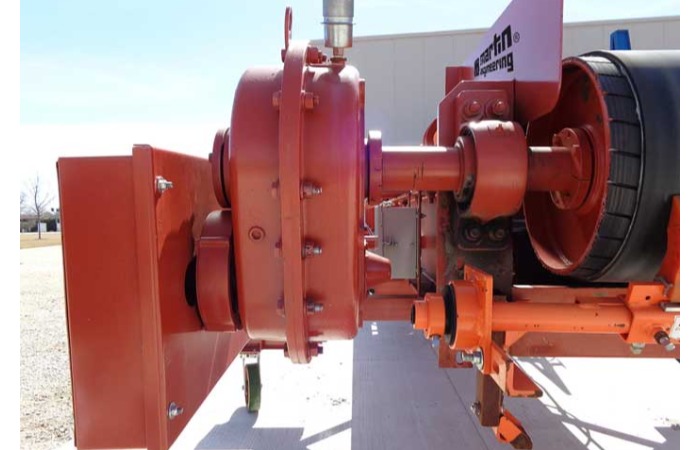
Keys to Successful Conveyor Safety
Bulk-handling conveyors are massive, powerful systems that move tonnes of material per hour in complex networks over long distances. Whether the systems are in a mine, cement plant, port, or quarry, their size, speed, and power present the risk of catastrophic injury in the blink of an eye. This makes training essential, no matter what activity is happening around a conveyor.
Training Challenges
Many industries are facing the retirement of workers with expertise and knowledge, leaving them without adequate mentorship. This has both good and bad aspects. Although basic on-the-job training passed down from worker to worker is valuable, it can leave organisations vulnerable to past workers teaching bad habits.
Unless the operations personnel have solid, real-world knowledge in bulk material handling to make educated decisions when addressing problems, bad habits are easily perpetuated. Knowledge needs to help maintenance workers avoid costly and dangerous trial-and-error learning.
Understanding how and why accidents happen is also critical in preventing them from occurring. Having knowledgeable trainers who address the symptoms of problems with workable long-term solutions will reduce unsafe practices and improve efficiency while enhancing profitability.
Seek Deeper Understanding
In many operations, there is a lack of qualified conveyor trainers. Equipment vendors and third-party trainers can be highly effective sources of training. However, with hundreds of companies providing such services, expertise and approaches can vary widely.
Training specialists from equipment manufacturers who offer training programmes like Martin Engineering, focus on overall conveyor performance and safety training. Combining deep industry experience and modern engineering will significantly improve operating decisions, resulting in higher productivity, fewer safety incidents, and reduced unplanned outages.
Qualified teachers should provide a variety of delivery methods based on different learning styles. For example, they should provide good graphics for visual learners, clear documentation for those who learn best by reading, demonstration models, or actual equipment for hands-on learners. These methods should all be designed to increase the probability of measurable positive results.
Payback on Quality Training
Organisations that embrace an effective training culture from the top-down show significant performance advantages over the competition. This is reflected in safety, productivity, and environmental records, as well as above-industry-average financial returns and share prices.
While many training efforts aim to maximise productivity, improving safety is a key element in achieving this objective. Insufficient safety training can be incredibly costly to an operation. When companies ensure workers have adequate training on particular risks, costs are minimised. Instead of simply teaching workers how to maintain a conveyor system, educators must also help students understand the consequences of not performing adequate maintenance.
With over 80 years of solving bulk handling challenges, the Martin Engineering Foundations Training has established itself as the most detailed and comprehensive conveyor belt maintenance and safety training system in the bulk handling industry. Using the Foundations textbooks, onsite trainers provide both classroom and hands-on training on the equipment trainees experience daily. The free online Martin Foundations Learning Center, accessible by computer, tablet, or smartphone, supports the lessons and is available 24/7. It uses a mix of text, photos, videos, webinars, online events, and live experts available to answer questions.
Martin trainers use the most effective training approach, which examines a plant’s specific conveyor challenges and helps companies run cleaner, safer, and more productive operations by treating the root causes of their problems. When workers and management understand why specific actions are essential and the cascading effects of poorly trained staff, they are more likely to adjust their behaviors and reap the benefits.
ABOUT THE AUTHORS:
- Jerad Heitzler, Training Manager, Martin Engineering
- Todd Swinderman, P.E. and CEO Emeritus, Martin Engineering


 +91-22-24193000
+91-22-24193000 Subscriber@ASAPPinfoGlobal.com
Subscriber@ASAPPinfoGlobal.com